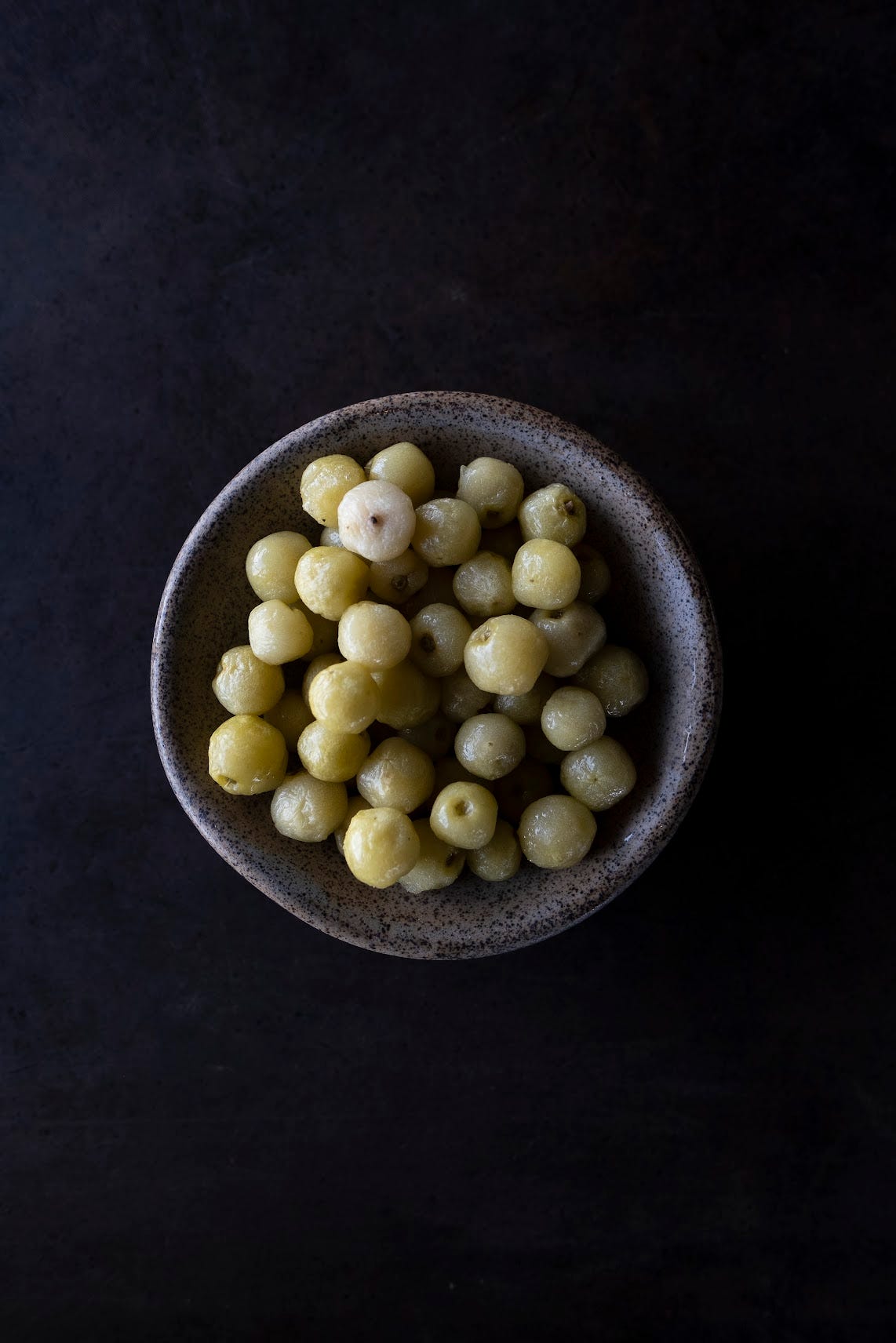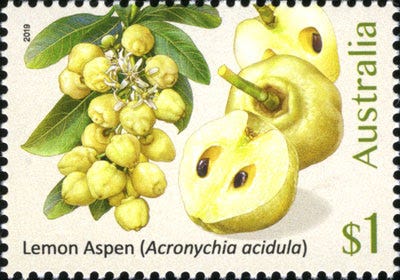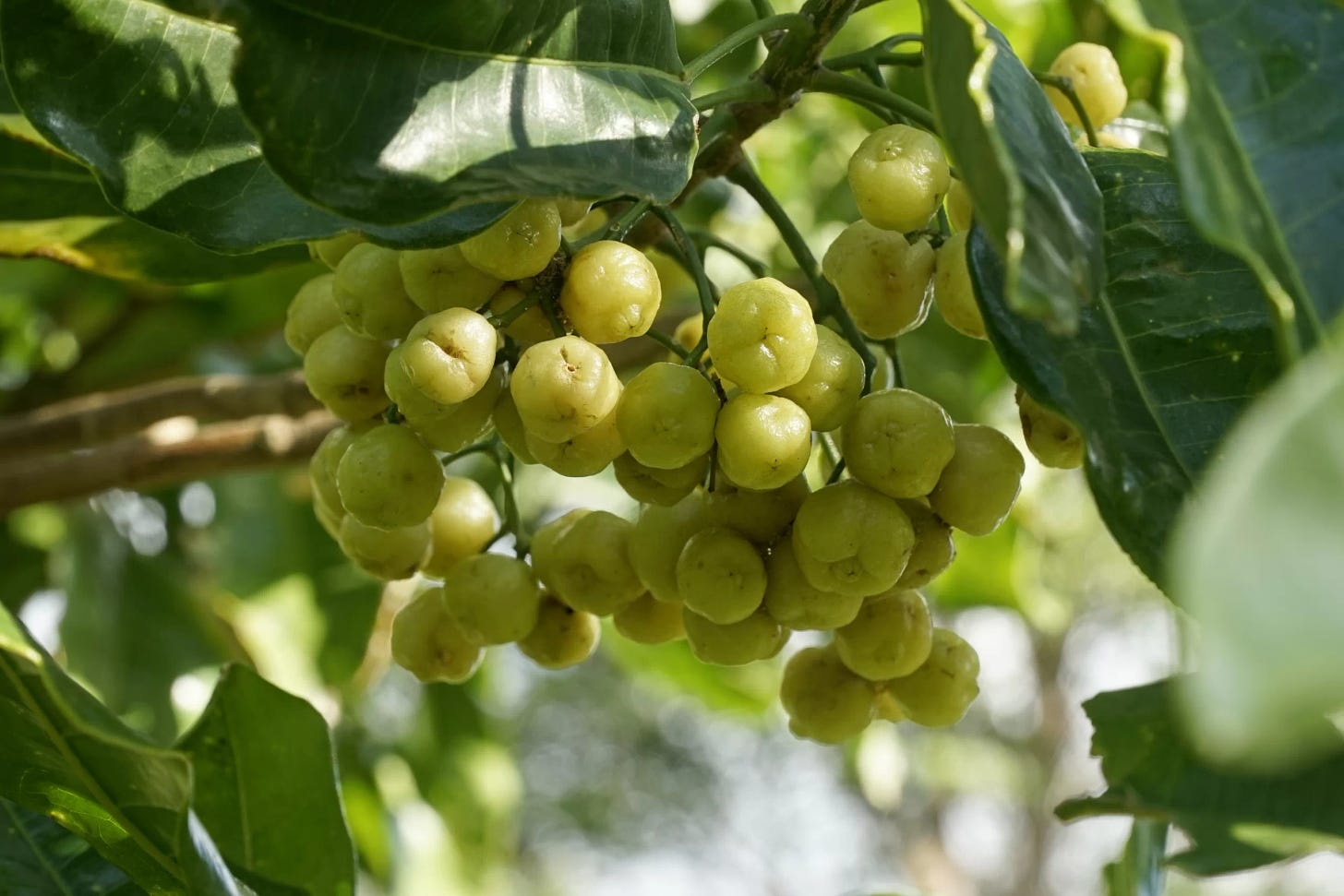Scientific name:
Acronychia acidula, Acronychia oblongifolia
Other names:
Pigeon Berry Southern Lemon Aspen, White Aspen, Lemon wood, Silver Aspen, Hard Aspen
Overview
From the Rutaceae family, the pale lemon-coloured fruit known as lemon aspen is commonly associated with two species: Acronychia acidula and Acronychia oblongifolia. Acronychia acidula, often recognised as the 'true' lemon aspen, is indigenous to tropical Queensland. On the other hand, Acronychia oblongifolia thrives along the east coast, spanning from northern Victoria to southern Queensland. Notably, its flavour is milder compared to Acronychia acidula.
History
Lemon aspen was frequently consumed by Indigenous communities in northeastern Queensland. Acronychia acidula was formally described for the first time in 1864 by Victorian state botanist Ferdinand von Mueller in "Fragmenta phytographiae Australiae" (a series of papers in which he published many of his approximately 2000 descriptions of new taxa of Australian plants). The specimens were collected by John Dallachy in the Seaview Range near Rockingham Bay. The species name, acidula, is derived from the Latin term for "slightly acid."
In August 2019 a postage stamp issued by Australia Post in a series of 3 called 'Bush Citrus' by Designer, Jo Mure
Seasonality
The northern species of lemon aspen, endemic to Queensland (Acronychia acidula), typically bears fruit from January to mid-April, whereas the southern lemon aspen (Acronychia oblongifolia) is available in November and December. The fruit is only produced for 4–8 weeks each year.
Habitat & Cultivation
Acronychia acidula thrives in rainforests at altitudes of up to 1,000 m, stretching from the Atherton Tableland to the Eungella Range in Queensland. On the other hand, Acronychia oblongifolia flourishes along the east coast, spanning from northern Victoria to southern Queensland, particularly in sub-tropical areas.
The tree is cultivated in small-scale commercial orchards along the east coast of Australia, ranging from North Queensland to northern New South Wales.
Flavour Profiles
Fresh citrus aroma, with grapefruit and lime-like flavour complemented by undertones of eucalyptus and conifer.
Preparation & Cooking
While the fruit can be consumed whole, its robust flavour makes it well-suited for various preparations, including its use in beverages, syrups, and jams.





